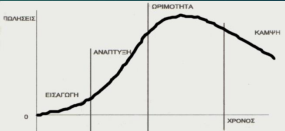All products and services have specific life cycles. The life cycle of a product is defined as the period from its introduction in the market until its final removal and is divided into four major stages or phases:
1 the introduction phase,
2 the growth phase of the product,
3 the maturity phase and eventually
4 the decline phase.
The main reasons that a coin can lose definitively whatever value it originally had and even reach zeroing are the following:
• The technology it represents is overcome.
• It is an exact copy of another technology that already exists.
• It’s delisted from exchanges
• Negligence or lack of interest from miners who do not proceed to confirmations of transactions.
• The coin was created right from the beginning to make the developer profit quickly (scamcoins).
{There are many cases where a coin has a very short life cycle. Some even do not reach even a month. This is because anyone can create a coin and –at a very low cost- include it for trading on some of the very small exchanges where strict specification criteria are not required.
In general, the more exchanges have a coin listed, the more reliable this coin is.
If we invest in a coin that we believe that it will have a short life cycle, the most prudent handling would be to proceed with liquidation at the earliest opportunity to generate a profit.}

---



